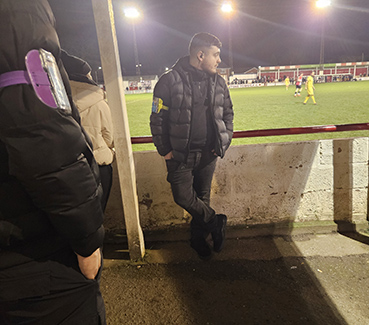We take another look at the monthly statistics about SIA licences from the Security Industry Authority.
We last looked, in the October 2023 print edition of Professional Security Magazine, at the August 2023 figures, when the total of SIA-badged was 429,088. Of those, 46,266 were women, or 10.8 per cent. The March 2024 total is 433,036 and of those 47,168 were female, or 10.89pc. In other words, the amount and proportion of women in private security is increasing; only slowly; at that rate, to get anywhere like 50-50 will take many years. On breaking the number of active licences (larger than 433,000 because some people may have more than one, such as a public space CCTV monitoring, and door supervision, badge, to carry out both roles) down by type of licence, women are well above one in ten of the non-frontline licences, and well below one in ten of the cash and valuables in transit (CVIT) holders. The door licence (that allows the holder to do static guarding also) continues to be the one most held by far – 335,504 as of March 2024, or 7621 more than in August 2023. Of those extra, 6435 are male and 1186 female, a percentage split of 84-16.
You might expect those reporting themselves to be native British as the most occurring nationality among the SIA badged, and so they are; 249,606 of those 433,000 (to round the number down). However, that total of British is well down from the 257,385 of last August. The three most occurring foreign nationalities are the same as in October 2022 and August 2023, and their numbers continue to rise noticeably: Pakistani (up by 55 per cent between October 2022 and August 2023, to 40,925; and a further 18pc, to 48,434 in March 2024), then Indian (similarly up between October 2022 and August 2023, and up a further 11pc to 21,694 in March 2024) and Nigerian (up from 14,626 in August 2023 to 18,508 in March 2024, a rise of 26.5 per cent). If we go back to the statistics for January 2021, the month that the UK officially left the European Union, the rises are yet more stark: then Pakistani were the most common nationality after British, with 14,124 badged; then came Nigerian with 9261; while Indian was only the 14th most common nationality, with 3111 badged. In total, then, in the 38 months since that month of Brexit, nearly 10,000 fewer of those SIA-badged are British, while there’s 62,140 more from those three nationalities of Pakistani, Indian and Nigerian (88,636 now compared with 26,496 in January 2021).
To judge whether Brexit has had an effect on how many from European Union countries are still in the UK and still renewing or taking up SIA licences, of the nationalities with more than 500 badged people in January 2021, countries with fewer so badged in March 2024 are: Ireland, Poland, Romania, Bulgaria, Lithuania, Latvia and Hungary. Nationalities with more SIA-badged since January 2021 are: Italy, Portugal, the Netherlands, Spain, Sweden, Slovakia, Belgium and Norway. A few, including major countries, show minimal differences (France has 20 fewer, Greece six fewer; Germany, 12 more).
Of the 229 places that the UK licence holders come from, naturally the most, short of half, are from London; it becomes more than half if you add the third category of Heathrow (west London, really) and Slough. Manchester in March 2024 as in the month of Brexit is the second largest place, though Heathrow and Slough since January 2021 have pipped Birmingham to third, perhaps reflecting the return of Heathrow Airport to pre-pandemic use. Then as now then comes Luton; but Glasgow has overtaken Liverpool (and by some distance). Given the rise in the total of licence holders between January 2021 and March 2024 – a rise of 17pc, of 63,923, from the Brexit month’s total of 369,113 – you would expect the totals of each place to rise too; and generally they have. But Belfast has only 14 more after those three and a bit years, now 4980. Particularly noticeable increases are in Birmingham, of 6658, an increase of 38 per cent to 24,125; and Leicester, of 1649, an increase of 36pc to 6196. Among the top 50 places, Warrington-Wigan and Newport (south Wales) have seen falls, and nearby Swansea has the same number (1751).
We noted last year the lament by many in manned guarding (and other fields, such as lorry driving) is that the workforce is old. Whereas the mode (the most occurring) age in October 2022 was 42 (pipping the total of 37-year-olds by one person), the most occurring age in August 2023 was 26; as of March 2024, it’s 27, although the total aged 26 (13,338) is only 18 fewer than those aged 27, so any change is hardly worth noting. Whereas in October 2022 only three ages had more than 10,000 people badged (32, 37 and 42), in August 2023 every year of age from 24 to 38 inclusive, plus 43, had more than 10,000. As you might expect given the slight rise in the overall total of badged, that range is slightly wider, from 23 to 39. The decrease with age is steady; while there’s as many as 8217 aged 53, and 5157 aged 63, the fall from there is steeper; only 1080 of the badged are aged 70. Seven badge-holders are in their 90s.
As for licence applications to the UK regulator, July was the month last year that saw most applications granted by the SIA (and most either ‘minded to refuse’ or refused – 580), perhaps reflecting some seeking a badge for summer-only work. The month with fewest applications granted was December.
You can view the statistics by month going back to December 2020, on the SIA website.
Photo by Mark Rowe; SIA badged men on duty last week at Sheepy Road, the north Warwickshire home of Atherstone Town FC, of the Midland League Premier Division.









